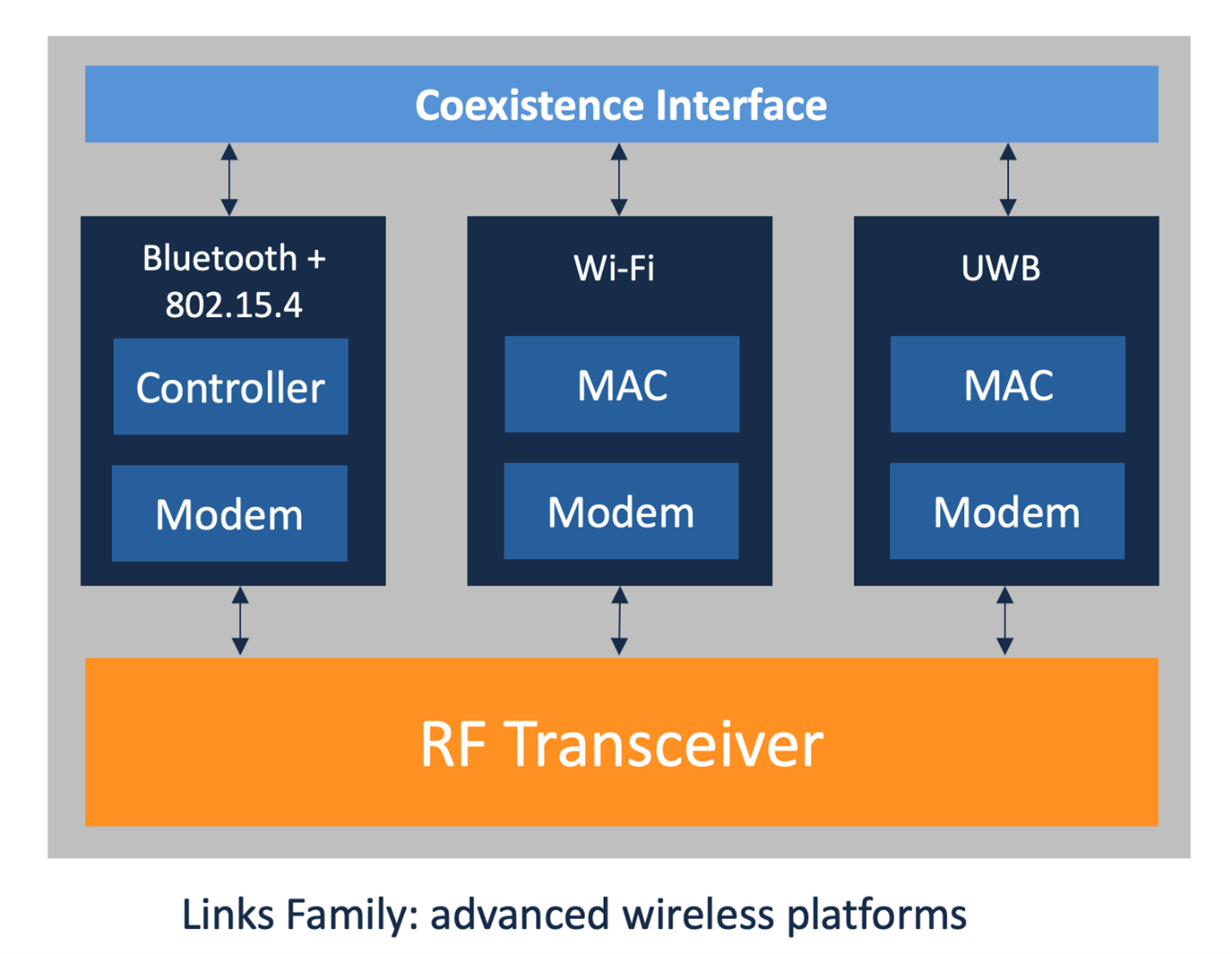Industry Expert Blogs

|
Multi-Protocol Communication Systems Deliver a Richer User ExperienceFranz Dugand - Ceva, Inc.May 29, 2024 |
There's a clear trend in wireless standards toward delivering increased wireless performance, higher bandwidths and lower latencies. This is important not only for raw speed but also in support of the rapidly growing number of devices that want to connect through different protocols, say in a smart home: smart speakers and TVs, thermostats, robot vacuums, smart window blinds, smart ovens and refrigerators, video doorbells, this list is endless. Equally we don't want to be tethered to our phones. Who carries their phone everywhere at home? If I'm listening to Spotify® through my wireless earbuds then need to go to another room, why not have Wi-Fi pick up the stream when I'm out of range of my phone Bluetooth connection? UWB adds precise positioning for a "find my X", among other possibilities. Consumer and industrial product builders see blossoming opportunity and are demanding multi-protocol options in support of their vision of a seamless wireless communication systems experience.

Market Opportunity for Communication Systems
Think about the Matter® protocol for smart home devices – simplifying everything about a highly automated home built around devices from multiple product providers. Working together seamlessly in setup and in everyday use. This applies equally to entertainment, gaming and personal assistant devices, to wireless access points, and why not to our watches or phones? Or indeed any other context where distributed wireless devices are common?
ABI research forecasts a 16B device TAM for wireless communication systems by 2028 with continued healthy growth beyond that point. Their forecast equally shows steady growth in individual protocol support highlighting that, for more complex use-cases, no single protocol can serve all needs.
ABI also show growing adoption of UWB especially around high precision, security and safety use-cases, such as CCC (Car Connectivity Consortium) standards for car digital key, and in-cabin radar applications for child and human presence detection. E-payment through phones or watches is another intriguing application demanding the security offered by UWB. However, UWB has a relatively high-power demand so is commonly augmented with Bluetooth.
As further evidence that this communication systems market is expanding, there are already multi-protocol full-chip solutions available from a variety of semiconductor vendors:
• Wireless MCUs with Wi-Fi 6 1×1 + BLE + 802.15.4
• Wi-Fi 6 2×2 plus Bluetooth dual mode (BTDM) for mobile, PC, TV and high-end devices
• Wi-Fi 7 2×2 plus BTDM plus 802.15.4 for mobile, and the same mix in a different chip for access points
• Wi-Fi 7 2×2 plus BTDM plus UWB for mobile, with more efficient data transfer, security and localization
• Wi-Fi plus BTDM for earbuds (for higher quality lossless audio)
• And more devices such as UWB+BLE (for indoor location tracking and digital keys)
As full-chip solutions, some of these offerings are obviously targeted to premium products. Higher volume consumer and industrial product developers want to build fully integrated solutions, which is where the Ceva-Waves Links IP Platforms shine.
Multi-Protocol Connect with Ceva-Waves
Ceva is already well-established as the embedded communication systems provider of choice, today powering ~1B Bluetooth chips and ~200M Wi-Fi chips annually. Solutions are also available for the emerging UWB and 802.15.4 markets. All these IP components are already shipping, for some Ceva partners delivering the kinds of multi-protocol connect solutions described above, though now in embedded implementations.
Yet more than a few of these partners acknowledge that their expertise is in their product and their value-add and not so much in multi-protocol communication systems. We sometimes find they struggle to optimally combine multiple wireless options and to connect those digital subsystems to a common RF front-end. Some of this challenge comes simply from intrinsic complexity in multiple digital options with added software/profile components, and some comes from managing effective co-existence between signals operating in a shared segment of the radio spectrum (e.g. 2.4 GHz).

To help overcome these challenges, Ceva has now released Ceva-Waves Links, a new family of multi-protocol wireless platform IPs. The first member of this platform family is Ceva-Waves Links100, integrating Wi-Fi 6, Bluetooth 5.4 and 802.15.4, encompassing a low power multi-protocol radio in TSMC 22nm ULL process, plus associated software and profile stacks. This communication systems platform is already in deployment for IoT applications. More additions will be made to the Links family as market demands evolve.
There are a couple of bespoke components to this solution. First, we only integrate the components a partner requests us to integrate. If you want a Wi-Fi IP and a BLE IP, we will supply you with an integrated communication systems IP matching exactly that need, omitting 802.15.4 and UWB support. The combined solutions will also be further optimized for co-existence to minimize interference between these subsystems. Second the supplied platform includes by default a pre-integrated common RF interface. Alternatively, we provide integration to a preferred partner or in-house RF option, in a selection of foundry processes and nodes.
Naturally Ceva-Waves Links already leverages strengths from established Ceva-Waves single protocol solutions, including:
• Wi-Fi 6 optimized for cost-sensitive IoT applications, or advanced Wi-Fi 6/6E/7 with MLO, for a variety of use-cases, from power-efficient IoT to high-speed data streaming
• Bluetooth 5.4 Dual Mode, with Bluetooth Audio and Auracast, plus a comprehensive suite of Bluetooth profiles, and next generations Bluetooth for Channel Sounding and Higher Data Throughout
• IEEE 802.15.4 (for Thread, ZigBee, Matter) for smart home applications
• UWB, supporting FiRa 2.0, CCC Digital Key 3.0, and Radar, for innovative micro-location and sensing features.
Multi-protocol communication systems are already taking off and competitive consumer and industrial products will need to adapt, quickly and confidently. We already see product developers aggressively designing such options into their next generation offerings, in chip and chiplet platforms, with a goal to make their products winners in winner-take-all markets. You can join them with Ceva's help, through our Ceva-Waves Links platform based on our widely adopted wireless connectivity portfolio.
